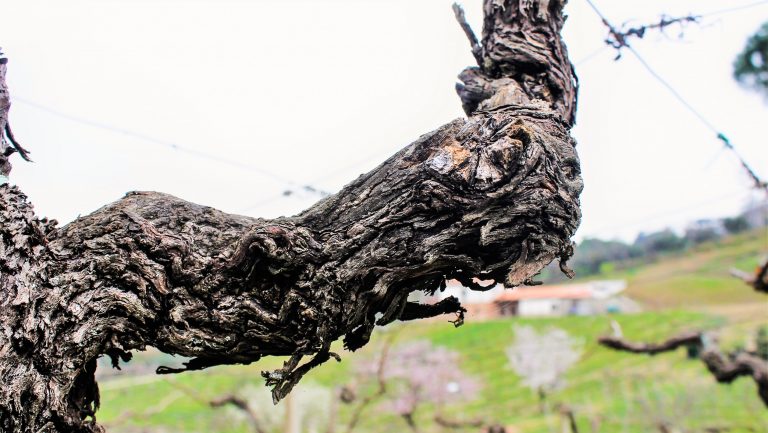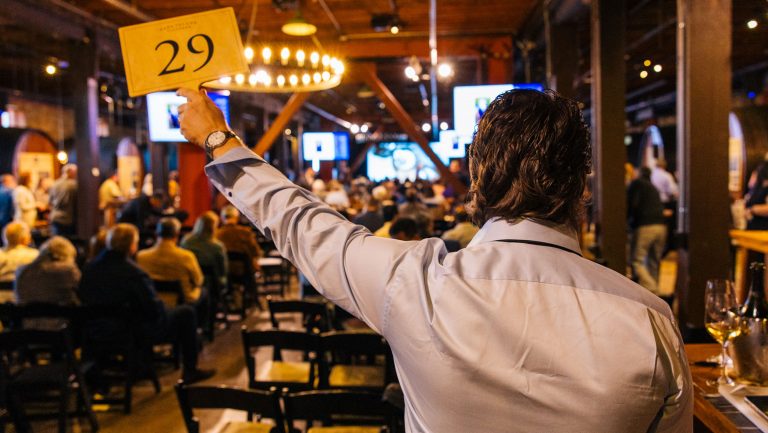At the intersection of mountain influences and cooling Mediterranean breezes, with volcanic soil and abundant sunshine, the Lazio region of Italy has all the natural resources to be a high-quality wine area. But a move toward large-scale industrial farming and an emphasis on fashionable international grapes rather than indigenous varieties in the second half of the 20th century gave Lazio a reputation for high-volume, low-quality white wines—most of which were offered in cheap carafes at trattorias throughout Rome. “Unfortunately, Lazio does not enjoy a good reputation,” says Georgea Marini, the winemaker for Azienda Agricola Marini Georgea in Gradoli, “because in the past it has never focused on quality and effective promotion at the national and international levels.”
In the last decade or two, that narrative has started to change. The natural-wine movement is taking hold in Lazio, where new producers are investing in organic and biodynamic viticulture and reviving such local traditions as aging wine in chestnut barrels and making macerated white wines. Some of these innovators are from established winemaking families and have inherited their vineyards; others have been lured from outside the region by the potential they see in Lazio’s terroir. Larger producers, like Casale Mattia and Marco Carpineti, are taking note.
Spurring a Quality Revolution
One of the most important catalysts for change in Lazio is the presence of a huge market—the sprawling city of Rome, and the increasing interest in natural wine there, says Sandro Sangiorgi, a wine educator and writer, and the founder of cultural association Porthos Racconta in Rome. “This is demonstrated by the locals in wine bars, wine shops, taverns, and traditional restaurants.”

Don’t miss the latest drinks industry news and insights. Sign up for our award-winning newsletters and get insider intel, resources, and trends delivered to your inbox every week.
Fortunately, there are those who are willing to satisfy that interest. “Wine growing [in Lazio] has stopped being only about producing a high quantity of grapes with out-of-control yields,” says Sangiorgi. “This trend of change from high-yield production to focus on healthy vineyards will continue with a shift to organic production throughout the region; even the reluctant will be surrounded by larger companies that have already made the conversion.”
Though Lazio is not a homogenous region (it has a wide variety of microclimates, terrains, and elevations), its soils are primarily volcanic, a result of two dormant volcanoes to the north and south of Rome. The growing interest in wines from volcanic areas is a huge selling point for the region, says Alfonso Cevola, a Houston-based Italian wine expert and the author of the blog On the Wine Trail in Italy. “There’s Etna and Campania—and Soave, for sure—who have the edge in the race,” he says. “But none of those areas have the critical mass of humans pouring into their nearest urban center.” Lazio is also home to a large variety of native grapes, like Cesanese, Bellone, and Nero Buono di Cori, many of which are being revived by modern winemakers.
While the revolution in wine quality is happening across Lazio, three exceptional vineyard areas are driving the change: the Frascati DOC in Castelli Romani, located just south of Rome; Olevano Romano, located a bit further southeast; and to the north, the volcanic slopes around Lake Bolsena.
Returning to Frascati Traditions
Sangiorgi says that the vineyard area of Monte Porzio, a village in the Frascati DOC with volcanic soils, could be considered one of the great grand crus of Italy once producers focus on quality over quantity.
Native Romans Danielle Presutti and Chiara Bianchi, the proprietors of the Cantina Ribelà winery, saw past Monte Porzio’s lackluster reputation when they purchased two hectares of vineyard land in 2014. Presutti, who studied architecture, and Bianchi, who studied philosophy and worked in her family’s restaurant for 10 years, both knew they wanted to switch gears and become winemakers in their native Lazio area, despite the devaluation of the land and loss of traditions, because they believed they could produce quality wines. “We want to revive old traditions,” says Presutti, “and improve the quality of the wine made here.”
Presutti and Bianchi resolved to practice biodynamics in the vineyard and cultivate only Lazio’s native grapes, like Malvasia Puttinata and Cesanese; in the winery, they opted to use chestnut barrels, the traditional vessel for fermenting and aging. “In the Castelli Romani, it was a tradition,” says Presutti, “and we were lucky enough to meet a cooper who still does this job. For us, it is the best thing—the characteristics of natural micro-oxygenation that [this] wood has, no [other] has.”

Cultivating Quality Cesanese
Though Lazio is now known as a white-wine region, it was traditionally home to red varieties, like the Cesanese grape that characterizes the Cesanese di Olevano Romano DOC. The geology of Olevano Romano is especially distinctive; the DOC is located in the foothills of the Apennine Mountains and at the outer edge of the Monte Albano volcano. The soils—a mix of volcanic rock, limestone, and red, iron-rich clay—can yield expressive, complex Cesanese wines, full of red fruit, pepper, and floral notes.
“Lazio has always produced excellent wines, since the Roman times, because it has good soils and climate conditions,” says Lorella Reale, who co-owns with her husband the winery Piero Riccardi Lorella Reale Viticoltori in Olevano Romano. “During the second half of the 20th century, Laziale wines entered a period of decline. But now some grape growers are working to produce quality wines.” Reale and her husband started making wines on Riccardi’s inherited family land in 2010, working biodynamically and promoting plant and animal biodiversity. “Respecting the soil,” says Reale, “is the only way to make quality wines.”
The Riccardi-Reale winery specializes in Cesanese and experiments with a small amount of white wine. The couple insists on hand-harvesting and employs spontaneous fermentation. They also work with locally made chestnut barrels, which are the ideal vessels for creating wines expressive of their terroir.

Crater Lake Slopes Finding International Acclaim
Lazio’s northern regions, located near the borders of Tuscany and Umbria, are also undergoing transformation. The slopes around Lake Bolsena, a crater lake in the now dormant volcano Monte Volsinii, have attracted new investment and interest, thanks to their rich volcanic soils and lake-influenced microclimate.
Natural-wine producers Le Coste and Andrea Occhipinti, both launched around 2004, have brought international attention to the small Gradoli subregion, located northwest of the lake. Many of the relatively young producers here were inspired to preserve traditional varieties like Aleatico, Grechetto Rosso, and Procanico (also known as Trebbiano Toscano) and to work with as little intervention as possible in the winery.
“I decided to produce quality wines because I believe very much in the potential of the vines in the area of Gradoli, where I live,” says Marini, “and also because I didn’t want to have to fight to the bottom to be able to occupy a place on the shelf of a supermarket.” Instead, she decided to revive the Aleatico grape, for which the Aleatico di Gradoli DOC is named, along with its traditional regional style—luscious, rich passito wines made from dried grapes. Marini is one of just two producers making Aleatico in this style, and she keeps production small, making just 4,000 to 5,000 bottles annually.
On the southern slopes along Lake Bolsena, in Montefiascone (home to the historic Est! Est!! Est!!! di Montefiascone DOC), three local friends—Daniele Manoni, Marco Fucini, and Nicola Brenciaglia—created Il Vinco winery in 2014. Their goal was to restore the native Canaiolo Nero variety, which was nearly abandoned in favor of international grapes, while simultaneously highlighting a particular terrain that, while close to Gradoli, was distinctive because of its lower elevation and diminished sea influence. Il Vinco also works with Procanico, Rossetto, and Malvasia Bianca to make an unofficial version of Est! Est!! Est!!! with spontaneous fermentation and no fining or filtering.
For the proprietors of Il Vinco, the reputation of Lazio could present an opportunity. “For us, the wine heritage of Lazio is neither a burden nor a disadvantage,” says Manoni. “While it’s true that for many years this region has been seen [for] quantity production at the expense of quality, it’s also true that for new, innovative companies like ours, it’s relatively easier to emerge in the [Lazio] market [as compared with] nobler and more famous regions.”
As more producers return to the traditional regions, grapes, and techniques of Lazio, the new wave of quality will continue to gain momentum. “A revolution is underway,” adds Manoni, “with many new young—and [some] less young—people who want to redeem their territory.”

Dispatch
Sign up for our award-winning newsletter
Don’t miss the latest drinks industry news and insights—delivered to your inbox every week.
Sarah May Grunwald lives and works in the Lazio countryside and leads wine tours and tastings in Rome and throughout Italy. She is a certified sommelier and current WSET Diploma student. She is the owner of the Tbilisi wine-and-food tour company Taste Georgia.







